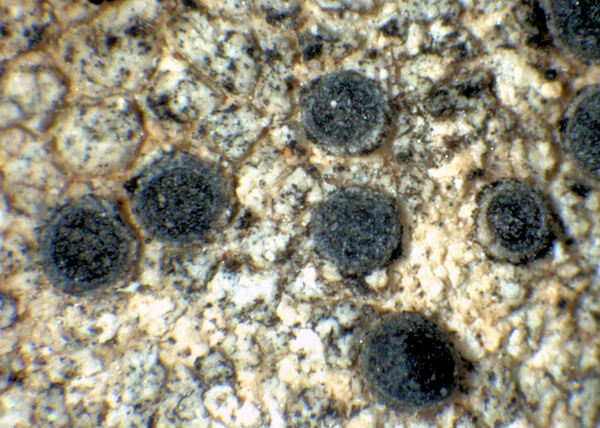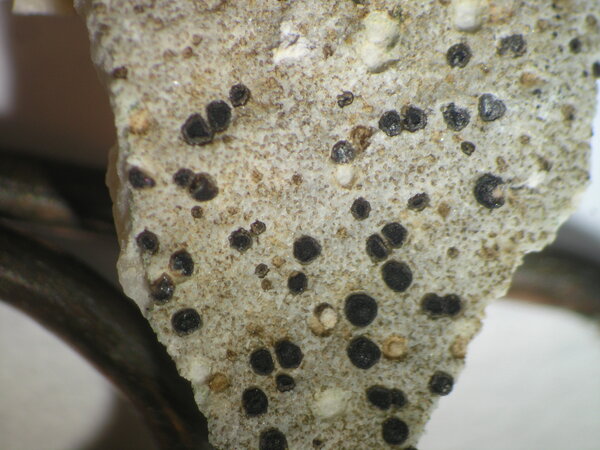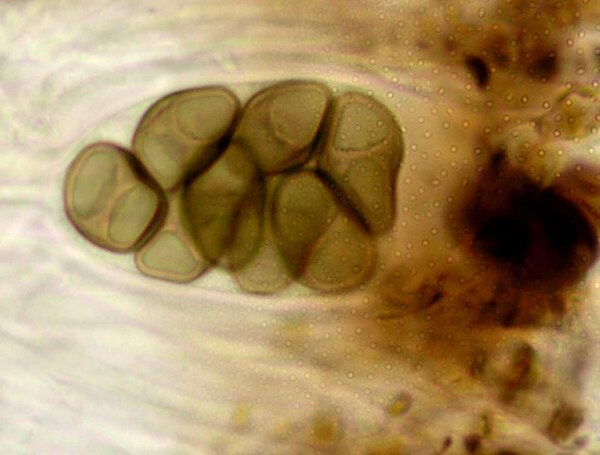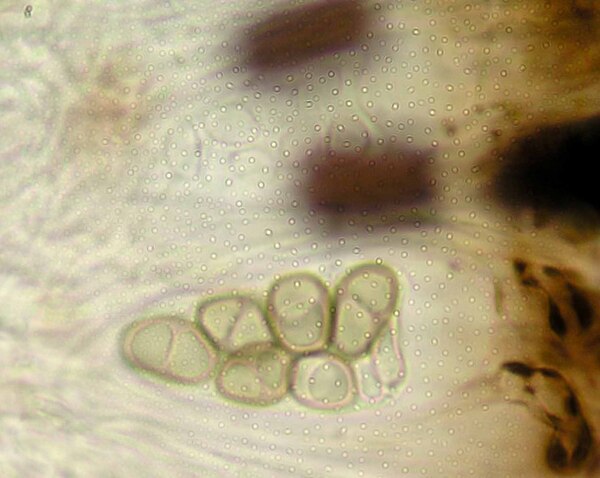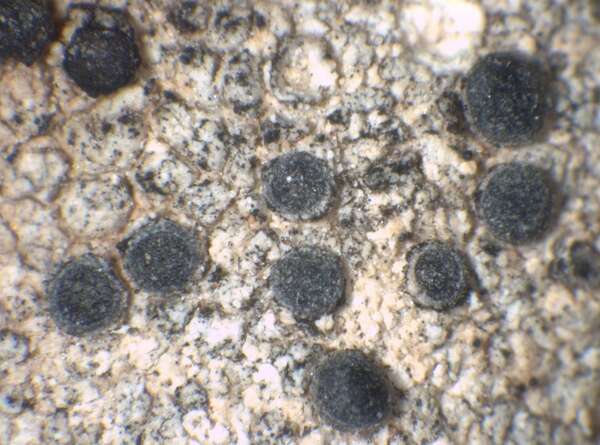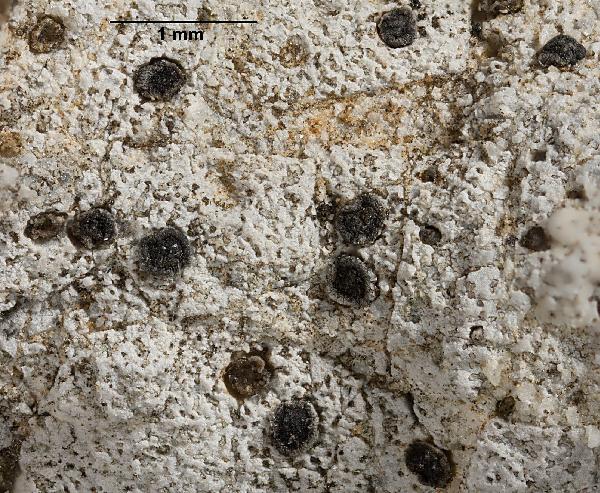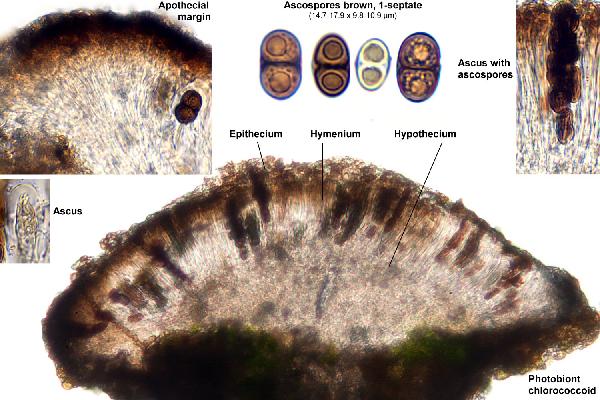Rinodina dubyana (Hepp) J. Steiner
Verh. zool.-bot. Ges. Wien, 69: 60, 1919. Basionym: Lecidea dubyana Hepp - Flecht. Eur.: nr. 322, 1857.
Synonyms: Buellia dubyana (Hepp) Rabenh.; Lecanora bischoffii var. mediterranea Stizenb.; Lecanora bischoffii var. melanops (Müll. Arg.) Stizenb.; Rinodina bischoffii var. mediterranea (Stizenb.) Flagey; Rinodina bischoffii var. melanops Müll. Arg.; Rinodina mediterranea (Stizenb.) Flagey
Distribution: N - VG, Frl, Ven, TAA (Nascimbene & al. 2022), Piem (TSB 32930), Lig (Nascimbene & al. 2021). C - Tosc, Marc (Nimis & Tretiach 1999), Umb (Genovesi & Ravera 2001, Ravera & al. 2006), Abr (Nimis & Tretiach 1999), Mol (Nimis & Tretiach 1999, Caporale & al. 2008), Sar (Neuwirth 2018). S - Camp (Aprile & al. 2003, 2003b, Nimis & Tretiach 2004, Garofalo & al. 2010), Pugl (Nimis & Tretiach 1999), Bas (Nimis & Tretiach 1999), Cal (Puntillo 1996), Si (Nimis & al. 1994, Grillo & Caniglia 2004, Caniglia & Grillo 2005, 2006, Grillo & al. 2007b).
Description: Thallus crustose, endosubstratic or more rarely very thinly episubstratic and then whitish to pale grey, rimose-granulose, forming small patches c. 1 cm across. Apothecia cryptolecanorine, 0.2-0.6 mm across, immersed in the rock, then adnate to rarely sessile, with a flat to slightly convex, dark brown to black, sometimes slightly white-pruinose disc, and a thin, sometimes finally excluded proper margin; thalline margin absent or very poorly developed. Epithecium dark brown, 15-20 µm thick, K-; hymenium colourless, 60-100 μm high; paraphyses simple, 1-2 μm thick at mid-level, the apical cells 3-7 μm wide, often capitate, the apical cell with internal brown pigment; hypothecium colourless or very pale brown. Asci 8-spored, narrowly clavate, the K/I+ blue tholus penetrated by a faintly amyloid apical cushion with parallel or diverging flanks, the wall K/I-, surrounded by a K/I+ blue outer layer, Lecanora-type. Ascospores 1-septate, brown, ellipsoid, sometimes slightly constricted at septum, (12-)14-17(-19) x 8-10(-11) μm, Dubyana-type, without a torus, the ontogeny of type A (apical wall thickening after septum formation). Photobiont chlorococcoid. Spot tests: K-, C-, KC-, P-, UV-. Chemistry: without lichen substances.Note: a mainly temperate species found on steeply inclined to rain-sheltered, sunny surfaces of limestone and dolomite wetted by rain, sometimes also on pebbles on the ground, with optimum below the subalpine belt.
Growth form: Crustose
Substrata: rocks
Photobiont: green algae other than Trentepohlia
Reproductive strategy: mainly sexual
Commonnes-rarity: (info)
Alpine belt: absent
Subalpine belt: absent
Oromediterranean belt: absent
Montane belt: rather rare
Submediterranean belt: rather common
Padanian area: absent
Humid submediterranean belt: very rare
Humid mediterranean belt: very rare
Dry mediterranean belt: very rare

Predictive model
Herbarium samples
Growth form: Crustose
Substrata: rocks
Photobiont: green algae other than Trentepohlia
Reproductive strategy: mainly sexual
Commonnes-rarity: (info)
Alpine belt: absent
Subalpine belt: absent
Oromediterranean belt: absent
Montane belt: rather rare
Submediterranean belt: rather common
Padanian area: absent
Humid submediterranean belt: very rare
Humid mediterranean belt: very rare
Dry mediterranean belt: very rare

Predictive model
| Herbarium samples |
 Index Fungorum
Index Fungorum
 GBIF
GBIF
